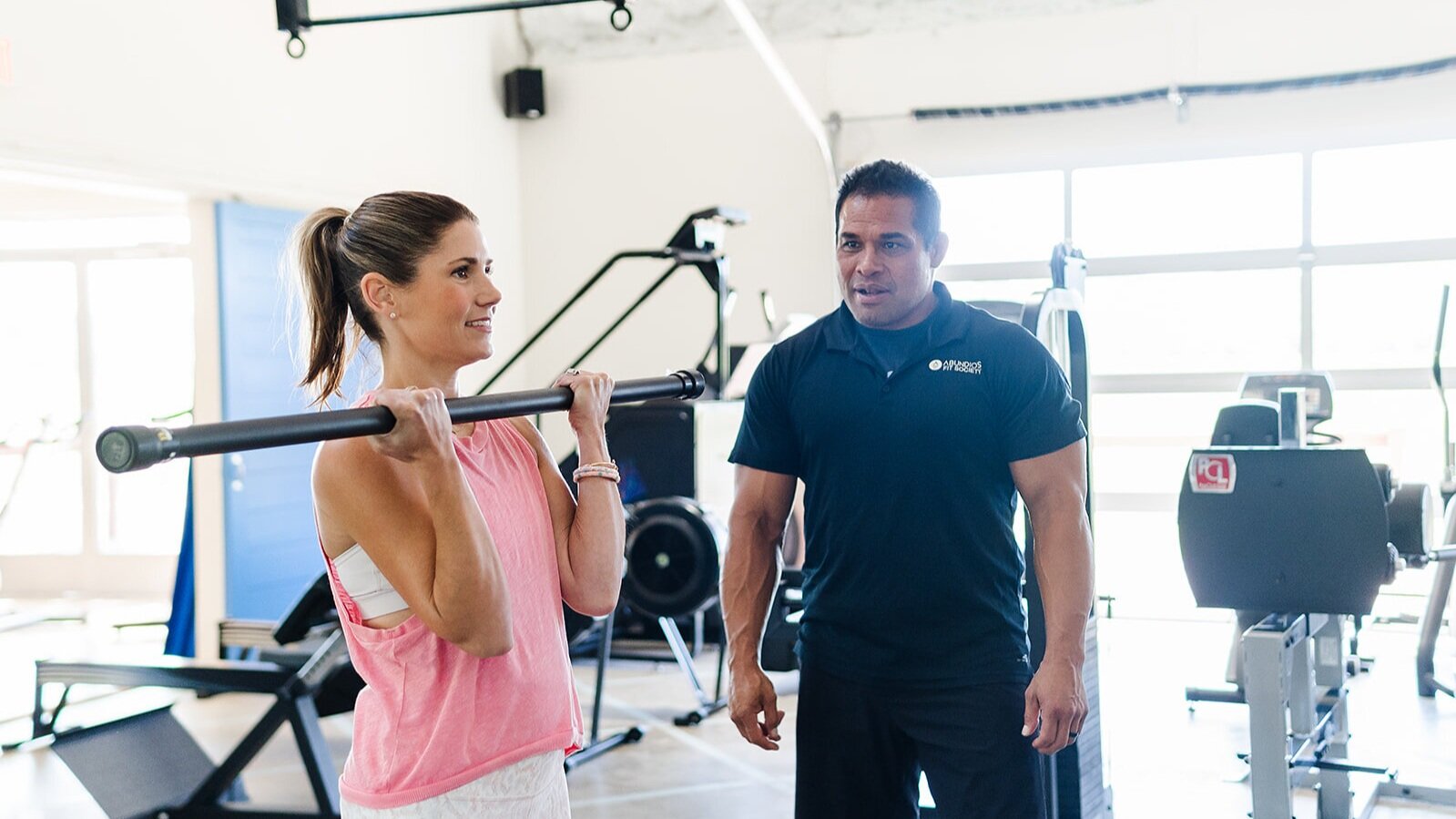
Being active at work can help you stay healthy. It is something that almost everyone can do. Exercising at work can bring benefits to your brain, mood, and ability to collaborate. Even if you are not in a cubicle you can still get in some exercise at work. If you don't know where to begin, here are some tips: Before you leave for work, use the restroom.
Make sure you have enough time to shower and change your clothes before you start your workout. After you finish working out, you will likely need to take a shower before changing into your workout clothes. You may need to factor this in depending on how your hair looks. It's common to exercise at lunch and then relax with music or a good book. It's amazing how great it makes you feel after working out.

Active at work doesn’t necessarily mean you should bring a gym bag. This goal can be achieved by simple lifestyle changes. Aim to do 30-40 minutes of light exercise daily. It will strengthen the body, mind, and help to reduce mid-morning or afternoon depression. Feeling refreshed and rested will make it easier to tackle the hardest projects or cross off the to-dos list.
Employees are most likely to do mandatory in-office exercises during lunch breaks. These workouts are more appealing to those between 30 and 49 than to those who are older. People who are not able to do in-office exercises may want to look at other options. If a workplace allows for an exercise break, it might be more entertaining or more enjoyable than a traditional office.
You can work out at your desk at any hour of the day. If you are at a desk, try to take the stairs more often, or devote your lunch break to a workout at a gym. By doing physical activities at work, you can benefit from improved mood and heart health. You don't need to spend hours in the gym, and you can do them in your office. It's a great exercise option to help you stay active at work.

Incorporate exercises into your lunch hour. You'll be amazed at the benefits of exercising. Being able to spend more quality time with loved ones is also a plus. Workouts at work are more efficient if you have the time. You can avoid the afternoon slump by exercising at work. You will feel more energetic and less stressed.
FAQ
What should my diet consist of?
Eat lots of fruits and vegetables. They provide vitamins and minerals to keep your immune system strong. Additionally, vegetables and fruits are high fiber. This helps with digestion and keeps them full. Include at least five portions of fruit and vegetables per day.
Make sure you drink plenty of water too. Water helps flush toxins out of your body and makes you feel fuller between meals. Drink about eight glasses each day.
Eat whole grains instead of refined ones. Whole grains are rich in nutrients such as iron, zinc and magnesium. Some nutrients have been removed from refined grains.
Avoid sugary drinks. Sugary drinks are loaded with empty calories and contribute to obesity. Instead, drink water, milk, or unsweetened Tea.
Avoid fast food. Fast food has very low nutritional value. Fast food may be delicious, but it will not give you the energy that you need to perform your tasks properly. Avoid soups, sandwiches and other unhealthy options.
Limit your alcohol consumption. Alcohol is a poor nutrient and has empty calories. Limit your consumption to no more than 2 alcoholic beverages per week
Reduce your consumption of red meat. Red meats have high levels of cholesterol and saturated fat. Instead, choose lean cuts of beef and pork, lamb, chicken or fish.
How to measure body fat?
A Body Fat Analyzer is the best way to measure body weight. These devices are used to measure body fat for people who want weight loss.
How do I get enough vitamins for my body?
You can get most of the daily nutrients you need through your diet. Supplements may be necessary if you are not getting enough of a particular vitamin. You can take a multivitamin supplement that contains all the vitamins you need. You can also buy individual vitamins at your local pharmacy.
Talk to your doctor if you have concerns about your nutritional intake. Some examples of rich sources of vitamins E and K include dark green leafy vegetables, such as spinach.
Ask your doctor to help you determine the right amount of vitamin. Based on your medical history and your current health, your doctor can recommend the correct dosage.
Why does our weight change as we get older?
How can you find out if your weight has changed?
A person who has less body fat than their muscle mass will experience weight loss. This means that daily energy needs must be greater than the calories consumed. The most common cause of weight loss is decreased activity levels. Others include pregnancy, hormonal imbalances or certain medications. If there is more body fat than muscle mass, then weight gain can occur. It happens when people eat more calories than they use during a given day. Overeating, increased physical activity and hormonal changes are all common reasons.
Our bodies lose weight because we eat fewer calories than we burn. Regular exercise increases metabolism, which means that we burn more calories per day. But this doesn't guarantee that we'll lose weight. All that matters is whether we're losing weight or gaining muscles. If we're burning more calories that we consume, we'll lose weight. But if we're consuming more calories than we're burning, then we're actually storing them as fat.
As we get older, our movement speed slows down and so we move less. We also tend to consume less food than when we were younger. This is why we tend to gain weight. On the flipside, we are more muscular than we really need and appear bigger.
There's no way to tell how much weight you've lost unless you weigh yourself every week. There are many options for measuring your weight. You can measure your waist, hips and thighs as well as your arms. Some prefer to use the bathroom scales, others prefer to use tape measures.
Track your progress by measuring your waistline and weighing yourself every week. You can also take photos of your self every few months to track how far you've come.
You can also check your height online to find out how many pounds you have. You'd likely weigh 180 pounds if you were 5'10 tall and 180 pounds if you were 180lbs.
Here are five ways to lead a healthy lifestyle.
Healthy living means eating right, exercising regularly and getting enough sleep. It also involves managing stress and having fun. Good eating habits include avoiding processed foods, sugar, unhealthy fats, and avoiding junk food. Exercise strengthens your muscles and helps you lose calories. Sleeping enough can improve memory and concentration. Managing stress reduces anxiety and depression. And finally, having fun keeps us young and vibrant.
Why is it so important to lead a healthy lifestyle
Living a healthy lifestyle can help you live longer and more happy lives. Regular exercise, healthy eating habits, healthy sleep habits and stress management can all help prevent strokes, heart disease, diabetes, and cancer.
A healthy lifestyle helps us cope better when we are faced with everyday stresses. Healthy lifestyles will increase self confidence, and make us look and feel older.
Statistics
- According to the Physical Activity Guidelines for Americans, we should strive for at least 150 minutes of moderate intensity activity each week (54Trusted Source Smoking, harmful use of drugs, and alcohol abuse can all seriously negatively affect your health. (healthline.com)
- This article received 11 testimonials and 86% of readers who voted found it helpful, earning it our reader-approved status. (wikihow.com)
- The Dietary Guidelines for Americans recommend keeping added sugar intake below 10% of your daily calorie intake, while the World Health Organization recommends slashing added sugars to 5% or less of your daily calories for optimal health (59Trusted (healthline.com)
- WHO recommends consuming less than 5% of total energy intake for additional health benefits. (who.int)
External Links
How To
What does the meaning of "vitamin?"
Vitamins can be described as organic compounds found in food. Vitamins are necessary for us to absorb nutrients in the foods we consume. The body cannot make vitamins; therefore, they must be obtained from food.
There are two types vitamins: water soluble or fat soluble. Water-soluble vitamins dissolve quickly in water. These include vitamin C (thiamine), Vitamin B1 (riboflavin), Vitamin B2 (riboflavin), Vitamin B3 (niacin), Vitamin B6 (pyridoxine), Vitamin C, B1 (thiamine), Vitamin B2 (riboflavin), Vitamin B3 (niacin), and Vitamin B6 (pyridoxine). Fat-soluble vitamins can be stored in the liver or in fatty tissue. Some examples include vitamin D and E, K, A and beta carotene.
Vitamins can be classified according to biological activity. There are eight major groups of vitamins:
-
A – Essential for normal growth, and the maintenance of good health.
-
C – essential for proper nerve function.
-
D - essential for healthy bones, teeth, and gums.
-
E is needed for good reproduction and vision.
-
K - Required for healthy nerves and muscles.
-
P - vital for building strong bones andteeth.
-
Q - aids digestion, absorption and absorption iron
-
R - Required for red blood cell production
The recommended daily allowance (RDA) of vitamins varies depending on age, gender, and physical condition. RDA values are set by the U.S. Food and Drug Administration (FDA).
For adults 19 years and over, the RDA of vitamin A is 400mg per day. Pregnant women require 600 micrograms daily to support fetal development. Children ages 1-8 require 900 micrograms per day. Children under 1 year old require 700 micrograms daily, while infants over one year old need 500 micrograms every day. This decreases between 9 and 12 months.
Children aged between 1-18 years require 800 micrograms of sugar per day, while overweight children need 1000 micrograms. Children who are underweight receive 1200 micrograms every day to meet their nutritional requirements.
2200 mg of vitamin A per day is required for children aged 4-8 who have been diagnosed by anemia.
2000 micrograms per person is necessary for general health. Women who are pregnant or breastfeeding need 3000 micrograms per day due to increased nutrient requirements.
Adults over 70 require 1500 micrograms each day, since they lose around 10% of their muscle mass every decade.
Women who are pregnant and lactating need more nutrients than the RDA. Pregnant women require 4000 micrograms daily during pregnancy, and 2500 micrograms every day after birth. Breastfeeding moms need 5000 micrograms each day when breastmilk production occurs.